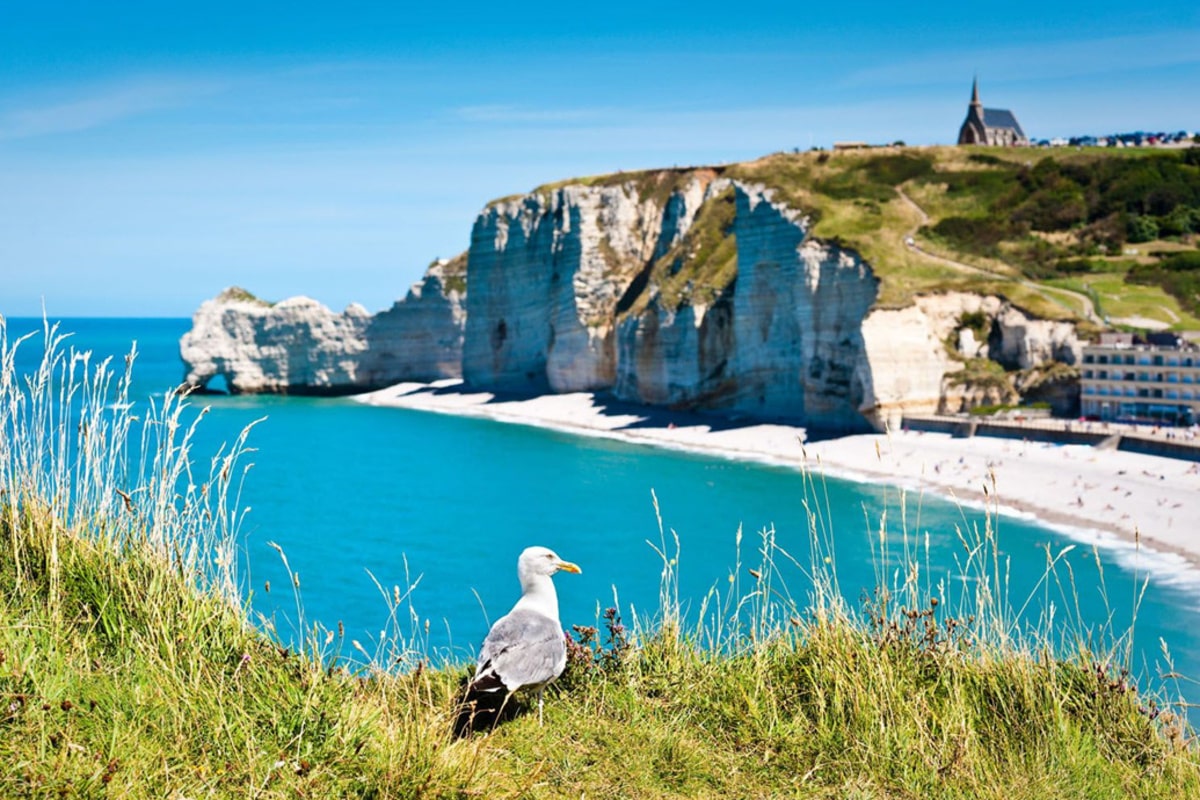Normandy is a region in northwestern France known for its picturesque landscapes, rich history, and vibrant cultural heritage. You might not know that this land, once ruled by Viking descendants, played a pivotal role in shaping the history of Europe. It is a place where medieval legends, military heroism, and culinary excellence intertwine. From the Norman Conquest of England to the D-Day landings of World War II, Normandy has witnessed some of the most defining events of Western civilization. Below are fascinating and educational facts that reveal the many layers of this remarkable region.
- The name “Normandy” derives from the word “Normans,” used in the Middle Ages to refer to Vikings. In the 10th century, Viking settlers established themselves along the coast, and in 911, King Charles the Simple granted them land in exchange for peace.
- One of Normandy’s most iconic figures was William the Conqueror, Duke of Normandy, who invaded England in 1066. His victory at the Battle of Hastings marked a turning point in English history and introduced a new era of Norman rule.
- The Norman dialect of French retains many features of Old Norse. Some local expressions and words still share roots with Icelandic and Norwegian languages.
- Normandy is home to the world-famous Mont-Saint-Michel, a medieval abbey perched on a rocky island. During high tide, the island becomes completely surrounded by the sea, creating a spectacular and mystical sight.
- During World War II, Normandy was the site of the largest amphibious invasion in history. On June 6, 1944, Allied forces landed on its beaches as part of Operation Overlord, initiating the liberation of Western Europe from Nazi occupation.
- Remnants of the Atlantic Wall, a system of German coastal fortifications, are still visible along the coast. Some have been converted into museums commemorating the events of D-Day.
- The American Cemetery at Colleville-sur-Mer is a place of solemn remembrance. Thousands of visitors, including descendants of fallen soldiers, pay their respects each year.
- Normandy is famous for producing Camembert, a soft, creamy cheese with a bloomy white rind. It has become one of France’s most beloved and iconic cheeses.
- The region also produces high-quality apple cider made from local apple varieties. Visitors can explore traditional cider farms and enjoy guided tastings.
- Calvados, a strong apple brandy distilled from cider, is another hallmark of Norman tradition. It is often served as a digestif and appreciated for its rich, aged flavor.
- Normandy’s climate is mild and oceanic, with frequent rainfall and temperate summers. These conditions support lush meadows, blooming gardens, and vibrant greenery year-round.
- Cities like Rouen, Caen, and Le Havre are rich in historical landmarks and architectural diversity. Le Havre, rebuilt after WWII by Auguste Perret, is recognized as a UNESCO World Heritage Site for its innovative urban design.
- Rouen’s cathedral inspired a series of paintings by Claude Monet. The city is also known as the place where Joan of Arc was tried and executed in 1431.
- Medieval festivals, historical reenactments, and knight tournaments are held regularly across the region. These events bring history to life and attract history enthusiasts from around the world.
- Normandy’s coast is dotted with dramatic natural features like the white chalk cliffs of Étretat. These iconic formations have inspired artists such as Gustave Courbet and Claude Monet.
- Traditional Norman farms often follow the “ferme-court” layout, with buildings arranged around a central courtyard. This architectural style remains common in rural areas today.
- Folk customs remain alive in many rural communities, including music, dances, and traditional costumes. Some local rituals trace their origins back to pre-Christian times.
- The region offers an extensive network of cycling routes that pass through fields, forests, villages, and historic castles. It is a haven for outdoor enthusiasts and nature lovers.
- Museums and galleries throughout Normandy feature impressionist masterpieces, maritime artifacts, and ancient manuscripts. Visitors can follow themed cultural routes that highlight art, history, and local heritage.
Normandy is more than just a region of France — it’s an open-air museum where every corner holds a story. These interesting facts show how deeply the past and present are woven together in this exceptional place. From Viking settlements to modern-day commemorations, Normandy offers a journey through time and tradition. If you’re seeking a destination that combines natural beauty, historical depth, and cultural richness, Normandy is a perfect choice.





